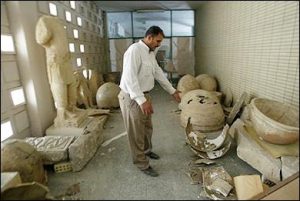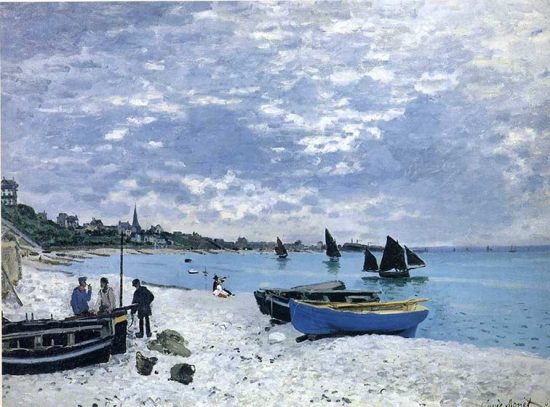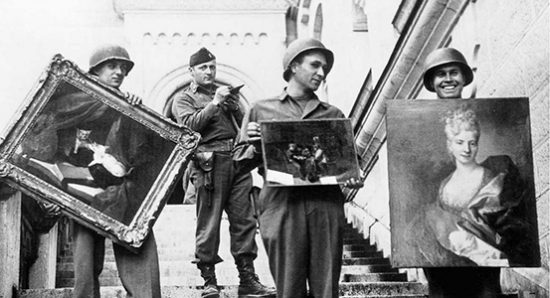The greatest theft of art in 20th century history was the theft carried out by Nazi Germany, beginning in 1933 and lasting until the end of World War II. Shrouded in secrecy, the Nazis launched a methodical and well-conceived campaign to confiscate and loot Europe of its most valuable art treasures. In this continual drama, these spoils of war were hidden away by the Germans in mines or stashed in secluded areas, sealed off from the world. Some were discovered by the military, some were discovered by citizens, but a majority are still hidden away waiting to be found.
Hitler and Goring selecting art...
A Viennese art historian named Burkhart List, 62, believes he has discovered a looted art collection buried in the mountains of Germany. He will lead an expedition into an old silver mine in the Erzgebirge Mountains, near the Czech-German border, where he believes over 150 works from the collection of Baron Ferenc Hatvany have been stashed for over 60 years. This collection includes masterpieces by such artists as Monet, Cezanne, and Manet, and is estimated to be worth almost $800 million.
List claims he's not searching for the art to make money, but has interestingly not been in contact with Hatvany’s heirs, nor is he working with the Commission for Art Recovery, which represents the Hatvany family in its own mission to retrieve its lost art. There are multiple organizations that aid in the recovery of stolen art, and the Commission for Art Recovery is a non-profit organization which seeks justice for Holocaust victims of Nazi art theft.
The restitution of Nazi-looted art is a hotly debated minefield of political and social obligations, laws, morals, and rights that span throughout the international community. Different countries have different policies regarding ownership, and even with international conventions set in place to help facilitate such issues, the process is often diluted by all of the competing interests. Masterpieces are certainly not discovered every day, but for treasure hunters, intentions can either help facilitate or destroy the process.
Before the war, Baron Ferenc Hatvany was a descendent of one of Hungary’s richest Jewish families. His holdings included rare tapestries, Old Masters, and one of the world’s best collections of 19th-century French painting. Today, only a handful of paintings have been returned to the Hatvany heirs. Some are on view in prominent Russian museum collections, but most remain missing. Either in private collections or still buried, the hope of finding the collection intact is a stretch. Even if the works are stored somewhere, there is little hope of them being intact. The storage space would have to have been airtight for 68 years and properly wrapped to find the collection in good condition, so why is List searching?

The art historian told ARTINFO “he has been studying the collection for 12 years, and recently discovered documents in old Wehrmacht archives that suggested a number of works were shipped in 1944 to two subterranean bunkers north of Dresden.” With the approval of the town’s mayor, List surveyed the landscape and discovered man-made caves that were similar to the ones described in the Nazi documents. Hopeful to find the collection, List plans on conducting an extensive expedition in May with the aid of fellow researchers and an “American media group.” If art is indeed discovered, German law states that the finder must notify the original owner of the property. If the owner cannot be determined, then the finder splits the title to the property with the owner of the land where it is found.
List said he would surrender whatever art he finds to the German government, but some suspect he may have other motives due to his previous working relationship with an individual named Joram Deutsch. Deutsch feels entitled to ownership rights of the collection due to an agreement his father had with the Hatvany’s that has been since been void. Whatever List’s intentions may be, art historians and collectors alike will be waiting to hear the results of his expedition.
Resources:
ARTINFO: http://www.artinfo.com/news/story/796779/questions-emerge-over-treasure-hunters-quest-for-a-legendary-800-million-horde-of-nazi-looted-art




